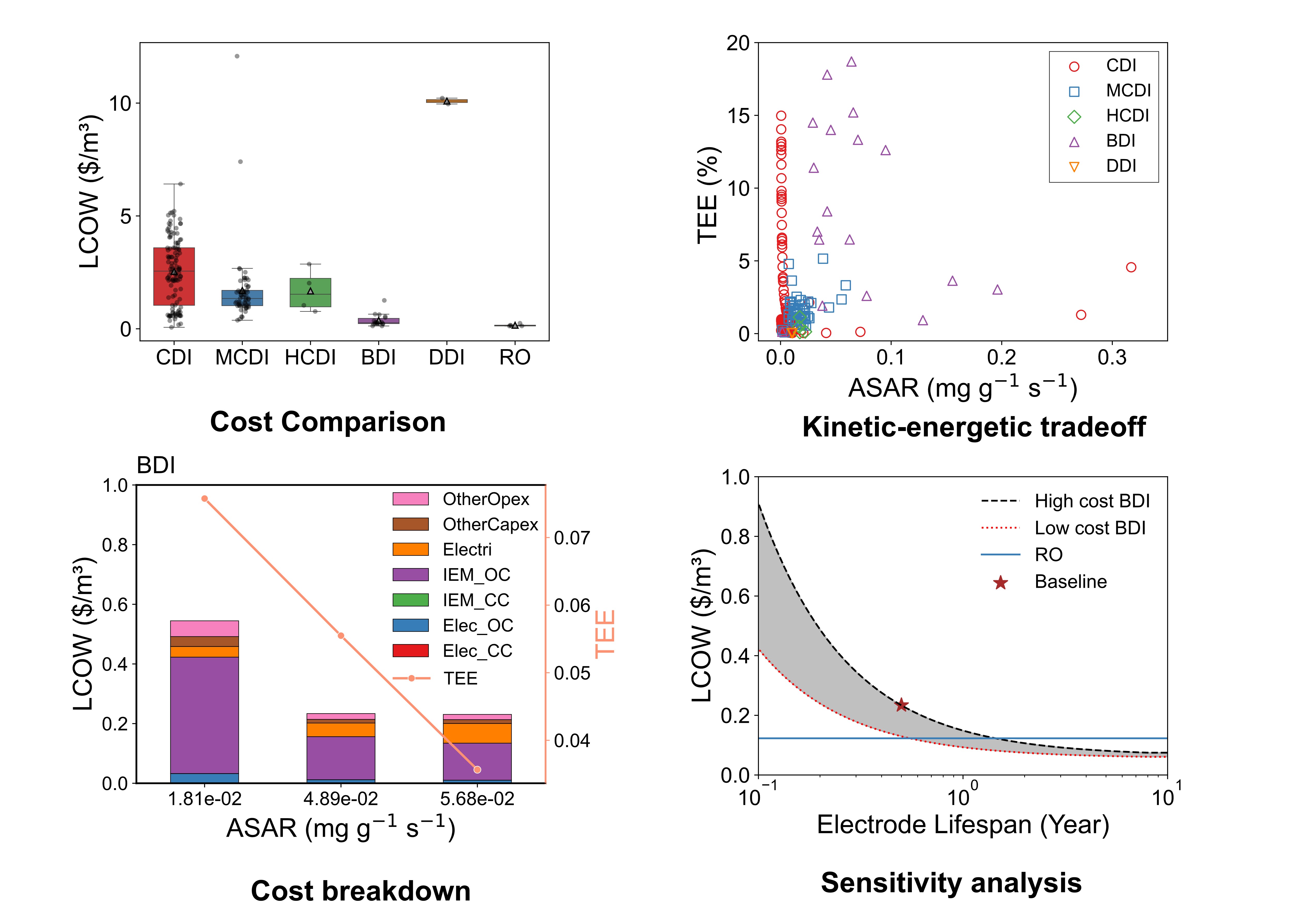Desalinated water presents a viable alternative water source for individuals amidst increasing global water scarcity. However, its adoption is hindered by the high cost and energy-intensive nature of desalination technologies. The C. Ellen Gonter Award, the highest honor presented to graduate students by the American Chemical Society’s (ACS) Division of Environmental Chemistry, recognizes the highest quality research papers submitted around environmental chemistry and engineering topics, such as desalination. For her research addressing its challenges, GW Engineering is excited to announce Civil and Environmental Engineering Ph.D. candidate Kejia Hu has been selected as a 2024 awardee!
“I am deeply honored to receive this award. It serves as a meaningful affirmation that the work I am doing is having a positive impact on the community,” Hu stated. “This recognition also motivates me to pursue even higher academic pursuits in the future.”
Capacitive deionization (CDI) has been widely studied for desalination due to its low-voltage operation, tunable salinity removal, and likely tolerance against fouling and scaling. There has been comparatively less research on faradaic-based CDI, which holds promise for increasing both energy efficiency and salt absorption capacity. Hu’s study, “Techno-economic assessment of brackish water electrochemical desalination with faradaic electrodes,” presents the first cost comparison of FDI and CDI against the more mature technology, reverse osmosis (RO).
A large-scale application of CDI and FDI has not been realized due to high capital costs and salinity limits. Thus, a techno-economic assessment of both traditional and faradaic-based CDI is indispensable because the levelized cost of water (LCOW) is a determining factor in selecting one desalination technology over another. Techno-economic analysis is a vital tool for comparing different technologies based on this key performance metric.
Despite the potential of FDI, this emerging technology faces technical challenges such as poor cycling stability. Key knowledge gaps also surround the techno-economic competitiveness of FDI systems, including:
- Comparative cost-effectiveness of FDI systems against CDI, membrane CDI (MCDI), and RO for achieving similar desalination performance remains unclear.
- Different architectures of FDI systems lead to varied desalination performance and energy consumption, but it’s uncertain which is the most cost-effective option.
- Energy consumption for brackish desalination is likely to contribute to a small fraction of the unit cost of water treatment. Identifying key system performance metrics impacting the LCOW is crucial for future cost-reduction efforts.
In the study, Hu addressed these gaps by developing a parametric model to estimate the LCOW produced by CDI, MCDI, and three architectures of FDI, hybrid deionization, dual-ions ionization, and battery deionization. Her model differs significantly from previous ones by incorporating performance metrics based on the experiment data reported in the literature, rather than relying on theoretical estimates based on electrode capacitance and cycle time. This approach allows the comparison of different operation conditions and materials without the need for complex physical models.
“I believe it is important that we compared the cost of the emerging desalination technology, faradaic deionization, with a more mature technology, reverse osmosis. One beauty of modeling is that it allows for thousands of comparisons, which would be impractical to conduct through experiments alone,” said Hu.
Under baseline assumptions, Hu found RO is still more cost-favorable than CDI and FDI. However, within faradaic deionization, battery deionization emerged superior to the other architectures in terms of energy efficiency, kinetics, and cost. The electrode lifespan and ion exchange membrane cost proved to be the dominating factors in reducing the cost of FDI. Additionally, Hu’s findings emphasize the engineering significance of material selection, parameter optimization, and cell design in creating a cost-optimal scenario for brackish desalination.
For both ordinary people and those within the electrochemical water treatment field, this study sheds light on which desalination technologies used to mitigate future water scarcity issues will be the most cost-effective. For the field specifically, Hu says the study “provides insight into cell architectures, operation strategies, and material selection, offering a pathway toward cost reduction of electrochemical desalination with faradaic electrodes.”
Hu led this research study in collaboration with GW Engineering alumnus Jianxin Chen, M.S. ‘20, Assistant Professor of Civil and Environmental Engineering at GW Engineering Xitong Liu, and Sneha Shanbhag from McMaster University. In addition to conducting techno-economic analyses as part of Liu’s Research Group, Hu is also interested in modeling the physical processes of electrochemical water treatment and evaluating the feasibility of treated water for irrigation use.
“As Kejia Hu’s Ph.D. advisor, I am thrilled to see her recognized as a 2024 Ellen Gonter Graduate Student Research Paper Awardee. This award is a testament to her hard work and dedication to advancing the techno-economic assessment of electrochemical desalination technologies,” Liu said.
Overall, Hu’s research significantly advances cost-effective electrochemical desalination technologies, a critical innovation for combatting global water scarcity. As a Gonter Award recipient, she is invited to present her paper at the C. Ellen Gonter Environmental Chemistry Awards Symposium during the ACS Fall 2024 meeting in Denver, Colorado. By presenting her research, Hu will not only receive well-deserved recognition and a check for $1,000 but also have the opportunity to inspire fellow researchers, further amplifying the impact of her work on this community.


